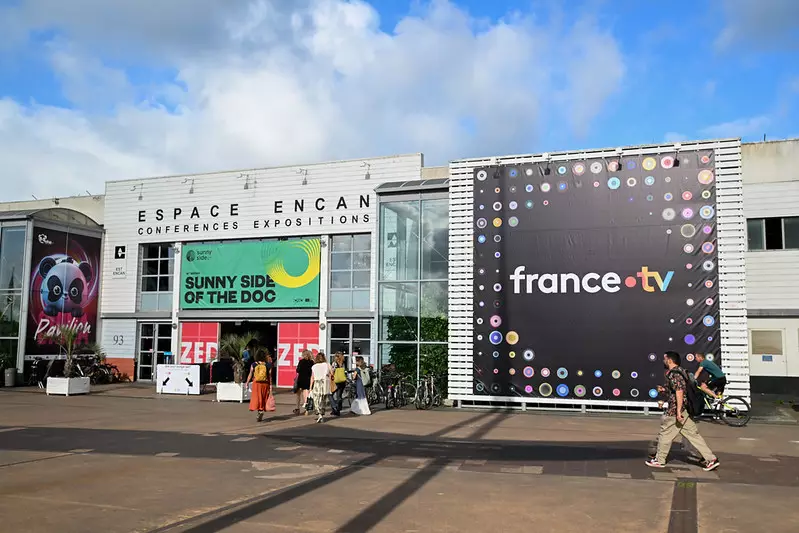The 36th edition of Sunny Side of the Doc, held in the quaint fishing town of La Rochelle, was far from a mere celebratory jamboree. Despite lasting just four days, it laid bare the convoluted dynamics of the global documentary world—a marketplace bustling with over 2,100 participants from 60 countries, including content producers, broadcasters, and distributors. This event doesn’t just hand out awards; it unveils the shifting sands of international storytelling power relations and the looming struggles over narratives and funding.
Aurélie Reman, the festival’s Managing Director, spoke triumphantly about a “forward-thinking programme” designed to confront industry pivots and financial uncertainties. But this rosy framing masks something deeper: the festival as a battleground where nations, corporations, and creatives jockey for influence in a rapidly changing media ecosystem. The presence of special delegations from diverse regions like Africa, China, and Latin America suggests an attempt to globalize perspectives, but also underscores the uneven terrain on which documentaries are marketed and consumed.
The Illusion of Inclusivity: Who Truly Wins Recognition?
The extensive prize lineup—from Best Arts Pitch to the Specialist IMZ and DocEdge Awards—celebrates a mosaic of international projects. Titles like *Leonard Cohen: Behind the Iron Curtain* (a Canadian-German-Polish co-production) and *Restless Farewell* from China, illustrate the high ambition and cross-border collaboration the festival seeks to encourage. However, a closer examination reveals a selective amplification of certain voices over others.
Projects linked with Western or Western-aligned production houses dominate key categories, a pattern that reveals the subtle gatekeeping mechanisms that still govern access to resources and global platforms. Even when projects hail from historically marginalized regions, such as *Mama* from Ecuador or *Taalim* from India, their celebratory framing risks being co-opted into a narrative that commodifies “underrepresented” stories for Western audiences rather than empowering local storytelling ecosystems.
Funding Challenges and the Commercialization of Truth
Reman’s acknowledgment of “funding challenges” barely scratches the surface of a systemic crisis. Documentary filmmakers worldwide wrestle with diminishing public funds amid the relentless push for marketability. The industry’s pivot towards digital streaming and multinational co-productions often comes at the cost of editorial independence and narrative risk-taking.
Sunny Side of the Doc’s marketplace ethos, while vital for networking, risks turning documentaries into commodities tailored to what broadcasters and streamers perceive as sellable content. The emphasis on multiple award categories linked to “impact campaigns” and “engagement” betrays the increasing need for projects to prove their social utility or “virality” to secure investment. This trend pressures creators to chase click-friendly themes or politically safe narratives, potentially stifling critical or radical voices.
The Unequal Geometry of Global Storytelling
The festival’s geographic scope is impressive on paper. Yet, the reality is a deeply uneven terrain where Western and corporate interests often wield disproportionate influence over whose stories travel and whose remain local. Even the inclusion of delegations from Africa and Latin America, while important, cannot fully counterbalance structural inequalities.
This disparity is visible in the patterns of co-production and distribution. Many awarded projects involve partnerships spanning continents, but predominantly under terms negotiated by Northern entities with far more industry clout. This dynamic replicates—sometimes inadvertently—the colonial patterns of cultural gatekeeping, raising questions about authentic narrative sovereignty.
Why Sunny Side of the Doc Matters—And Why We Should Stay Critical
Sunny Side of the Doc holds undeniable value as a convening space for industry players and as a platform for some truly groundbreaking projects. But its format and very framing reveal a paradox: a progressive event that both challenges and reinforces entrenched hierarchies.
For those invested in documentary filmmaking as a tool of social change, it’s imperative not to be seduced by the gloss of cross-border collaboration alone. Instead, sustained critique and activism within such festivals are essential to ensure inclusivity transcends token representation, that funding models support creative freedom, and that global storytelling truly embraces multiplicity beyond commercial feasibility. Without this vigilance, Sunny Side risks becoming just another glossy showcase that recycles dominant perspectives under the guise of innovation.
The documentary film world, vibrant and necessary as ever, demands structural reforms—not just awards—that empower storytellers from all strata to narrate their realities on their own terms.


Leave a Reply